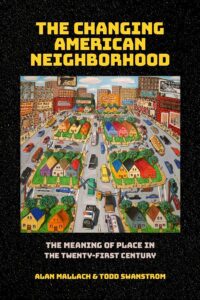In Alan Mallach and Todd Swanstrom’s new book, The Changing American Neighborhood, they argue that the physical and social spaces created by neighborhoods matter more than ever for the health and well-being of twenty-first-century Americans and their communities. Challenging conventional interpretations of neighborhoods and neighborhood change, they adopt a broad, inter-disciplinary perspective combining theory with on-the-ground gritty reality, showing that neighborhoods are messy, complex systems, in which change is driven by constant feedback loops that link social, economic and physical conditions, within distinct larger spatial and political contexts. The Changing American Neighborhood is an essential tool not only for understanding the reality of today’s neighborhoods, but for sustaining good neighborhoods and rebuilding struggling ones.






